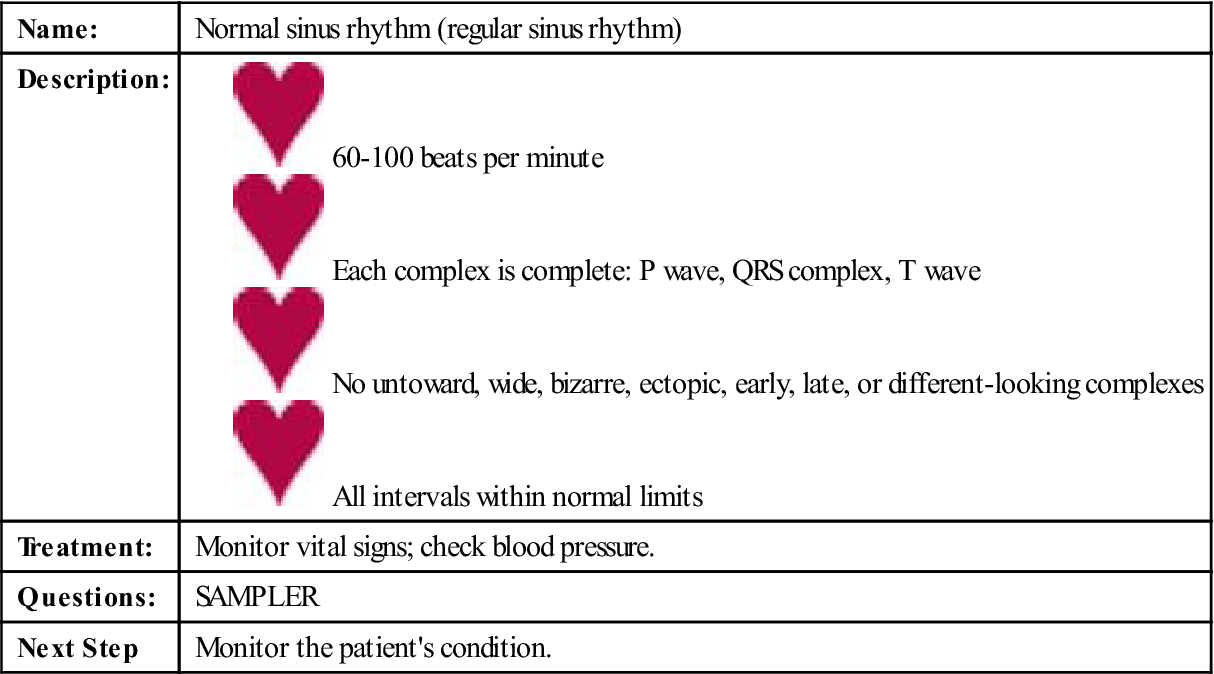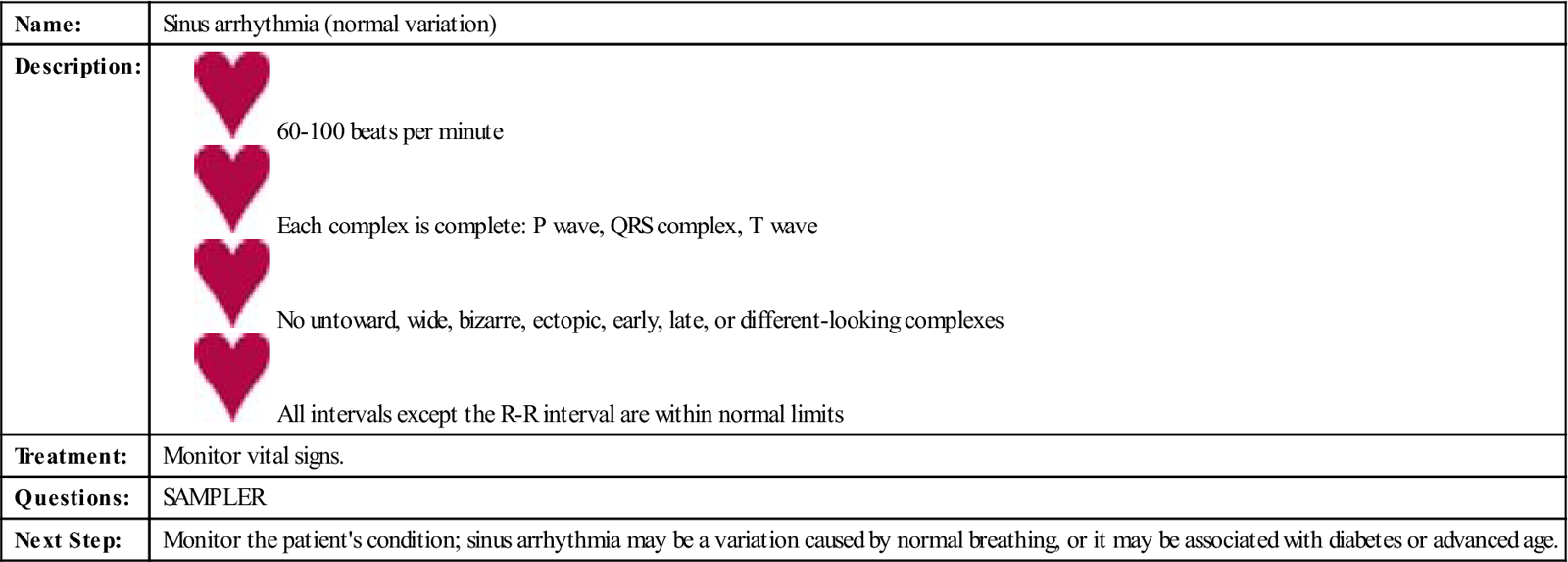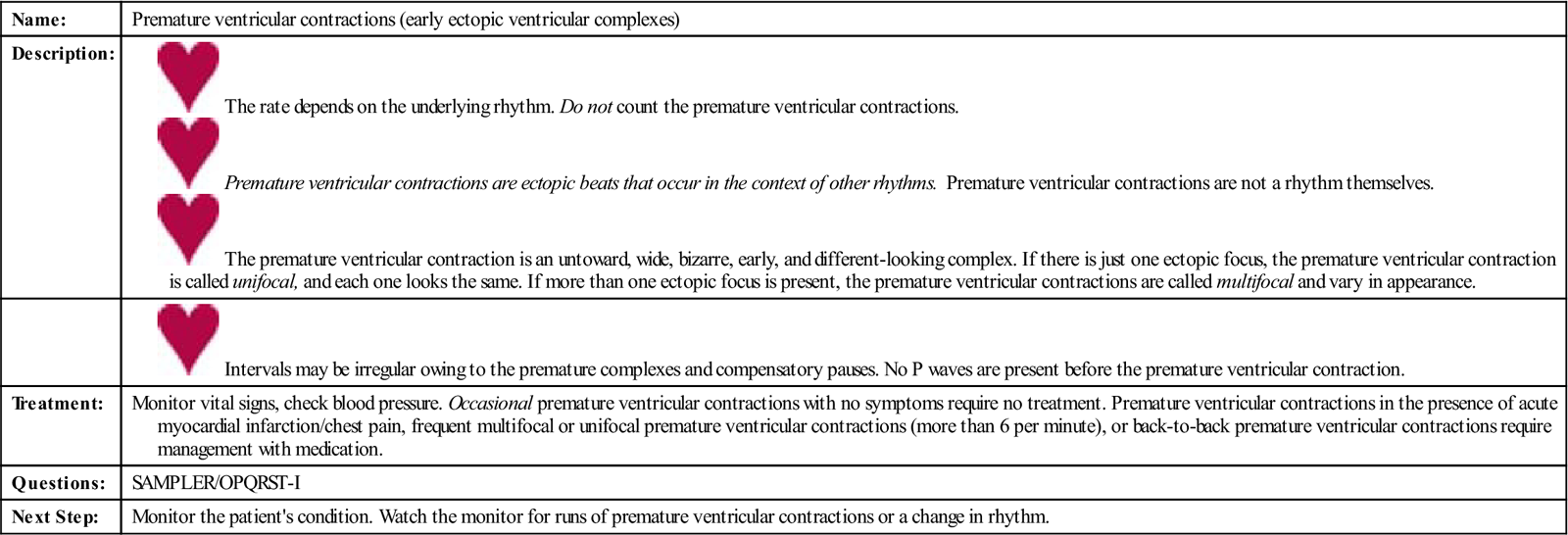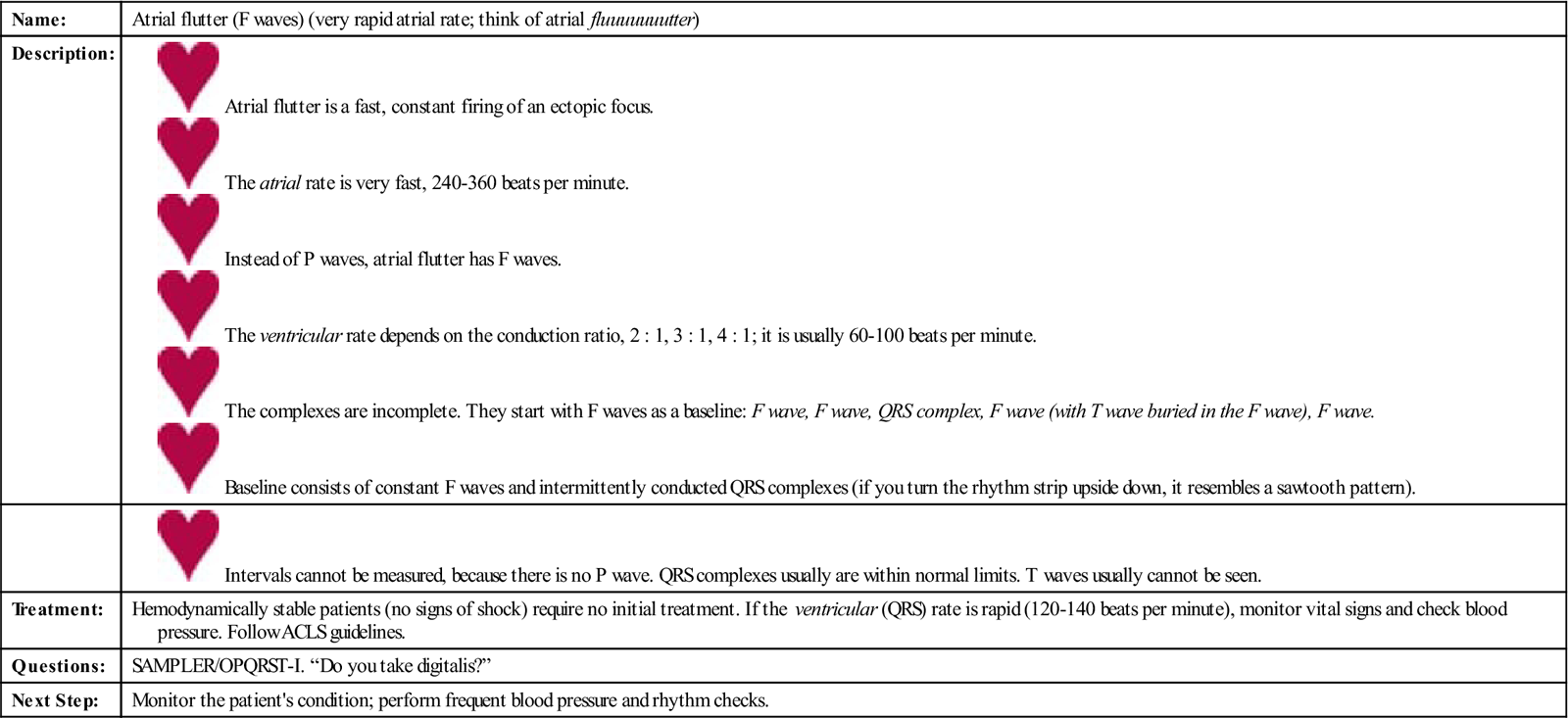Rhythms
Normal Sinus Rhythm
| Name: | Normal sinus rhythm (regular sinus rhythm) |
| Description: | |
| Treatment: | Monitor vital signs; check blood pressure. |
| Questions: | SAMPLER |
| Next Step | Monitor the patient’s condition. |


Sinus Arrhythmia


Sinus Bradycardia


Sinus Tachycardia


Premature Atrial Contractions


Premature Ventricular Contractions


Atrial Flutter





